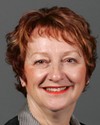I don't know the nuance of it, but I do know there have been significant improvements within the federal public service in terms of the senior management roles and women taking them. There's been a great increase, and I think it's been pretty well documented. Gaps still exist, but it's been remarkable.
Evidence of meeting #33 for Status of Women in the 40th Parliament, 2nd session. (The original version is on Parliament’s site, as are the minutes.) The winning word was trades.
A recording is available from Parliament.



